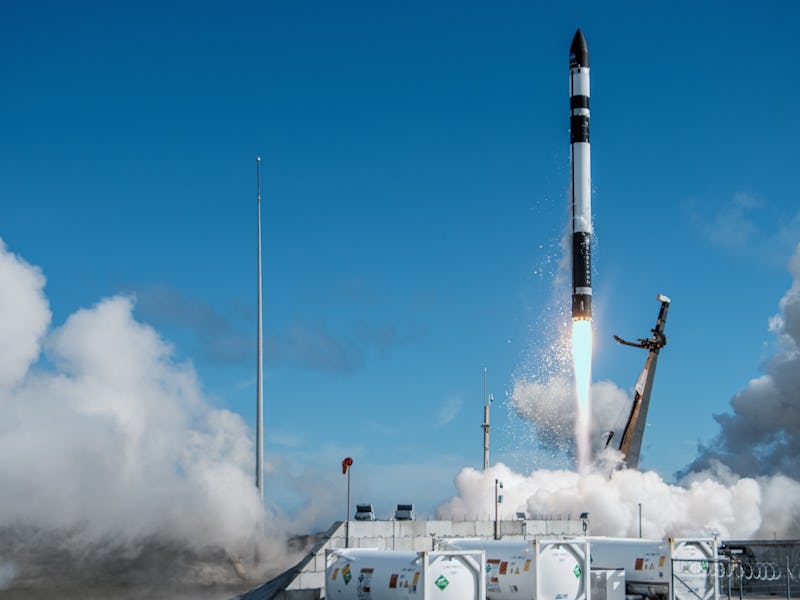NASA’s Newest Mini Satellites Just Launched — and They Could Transform Our Understanding of Hurricanes
The agency will get hourly updates on storm formation.

On May 7, the first two satellites from NASA’s new storm-monitoring mission lifted off from northeast New Zealand.
The agency tapped Rocket Lab, a private spaceflight company and launch provider, to send two shoebox-sized satellites off to low-Earth orbit — about 340 miles up in space. Rocket Lab carried up NASA’s gear in its reusable 59-foot Electron rocket, which has so far sent over 150 satellites to the cosmos.
This mission, called TROPICS, will collect an unprecedented amount of data on hurricanes and typhoons, giving scientists more insight into how they can quickly turn ferocious.
This successful recent launch follows a major setback in June 2022 — at the time, NASA had contracted the California-based company Astra to send up its TROPICS satellites. But the rocket’s upper stage shut down on its way to orbit and fell back down to Earth due to a blocked fuel injector. After this mishap, NASA switched to Rocket Lab for the TROPICS launches.
The first stage of Rocket Lab’s Electron rocket is designed to be reused.
What will the TROPICS satellites do?
TROPICS stands for Time-Resolved Observations of Precipitation Structure and Storm Intensity with a Constellation of Smallsats (quite the mouthful, even for acronym-loving NASA).
These mini-satellites will offer hourly updates on typhoon and hurricane growth to help improve storm forecasting. Ultimately, the $30 million TROPICS mission aims to figure out how temperature, humidity, and precipitation factor into the intensity of tropical cyclones.
(Hurricanes and typhoons both fall into the category of tropical cyclones, but the former refers to storms that develop over the North Atlantic, central North Pacific, and eastern North Pacific. The latter refers to storms that form in the Northwest Pacific.)
The satellites will gather valuable weather data by measuring heat and light from storms in the form of microwaves. The stronger the rain, the stronger the microwave emissions. This tech will even help scientists make 3D models of storm conditions.
Electron at a wet dress rehearsal in New Zealand on April 28, 2023.
NASA already has some massive weather satellites floating around for similar purposes, but they can only keep an eye on storms every four to six hours — so the TROPICS mission aims to complement this information with more regular updates using small yet efficient tech.
All in all, NASA wants to put four TROPICS satellites up in space in slightly different low-Earth orbits — all circling the globe at about 30 degrees above the equator, according to a NASA press release. This formation helps the devices pass over the places where most tropical cycles brew — a region stretching from the Mid-Atlantic United States to Australia’s southern coast.
The TROPICS constellation is part of NASA’s broader Earth Venture Class missions, which “select targeted science missions to fill gaps in our overarching understanding of the entire Earth system,” according to a NASA press release.
When is the next TROPICS launch?
All four TROPICS satellites need to be launched to orbit within 60 days, according to NASA. The next lift-off is slated for May 22, no earlier than 1:30 a.m. EDT. When all the gear is in place, NASA expects the mission to last for a year.
This article was originally published on